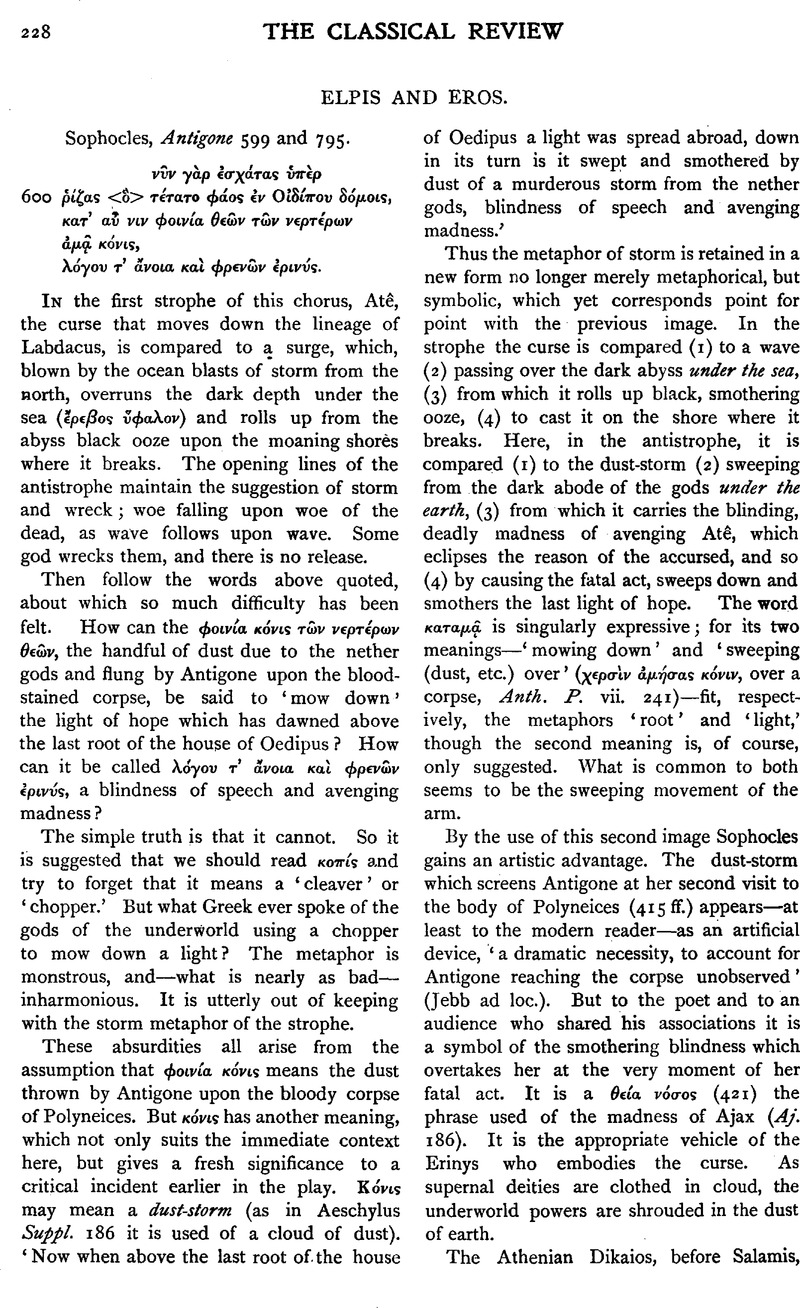No CrossRef data available.
Article contents
Abstract

- Type
- Original Contributions
- Information
- Copyright
- Copyright © The Classical Association 1907
References
page 329 note 1 A discussion of these conceptions will be found in my Thucydides Mythistoricus, p. 184 and ch. xiii. See also Dr. Headlam (in Cambridge Preelections, 1906), from whom I first learnt to study these mythical associations.
page 329 note 2 Cf. in the previous scene, 760: Kp.![]()
page 330 note 1 Beare, Greek Theories of Elementary Cognition, p. 9 note.
page 330 note 2 Cf. l. 451 ![]()
page 331 note 1 Festschrift für Gomperz 1902, Der Gedankenforlschritt in den Chorliedem der Antigone.
page 331 note 2 Eurip. Medea 824 ff. trans. Murray ![]()
page 331 note 3 For this subject see Harrison, J. E., Prolegomena to theStudy of Greek Religion, p. 641.Google Scholar
page 321 note 4 Hippol. Ref. v. 8, p. US, 76=Diels Fragm. der Vors.1, Parrn. (dub.) 20.
page 321 note 5 The lines which immediately precede this chorus are: 
page 332 note 1 Iambi, vit. Pyth. ix. 46 
page 332 note 2 I suspect that the marriage of Κ∘ρή with Hades was allegorically interpreted as the marriage of the eye of the soul with the Sun by means of the abγai, the radiance of the light of truth—an allegory which Plato turned to his purpose in Rep. vi. There is, I am told, some reason to identify Hades with the sun the underworld A trace of the doctrine is found Aristophanes Thesm. 17![]() —a phrase which we find in the Pythagorean Euryphamus (Stob. Flor. 103 27), who calls man
—a phrase which we find in the Pythagorean Euryphamus (Stob. Flor. 103 27), who calls man ![]() , planted by the divine power the cosmos, as
, planted by the divine power the cosmos, as ![]() . It is disputable whether the title of the Hermetic treatise
. It is disputable whether the title of the Hermetic treatise ![]() means ‘ Eye’ or ‘ Virgin of the World.’
means ‘ Eye’ or ‘ Virgin of the World.’ ![]() is an epithet of Protogonos-Phanes-Priapus, Orph. hymn. vi.
is an epithet of Protogonos-Phanes-Priapus, Orph. hymn. vi.


